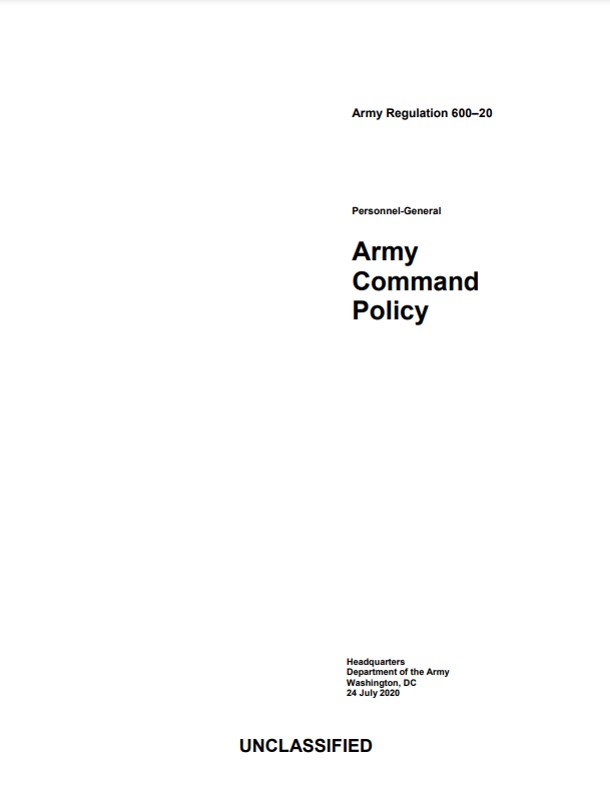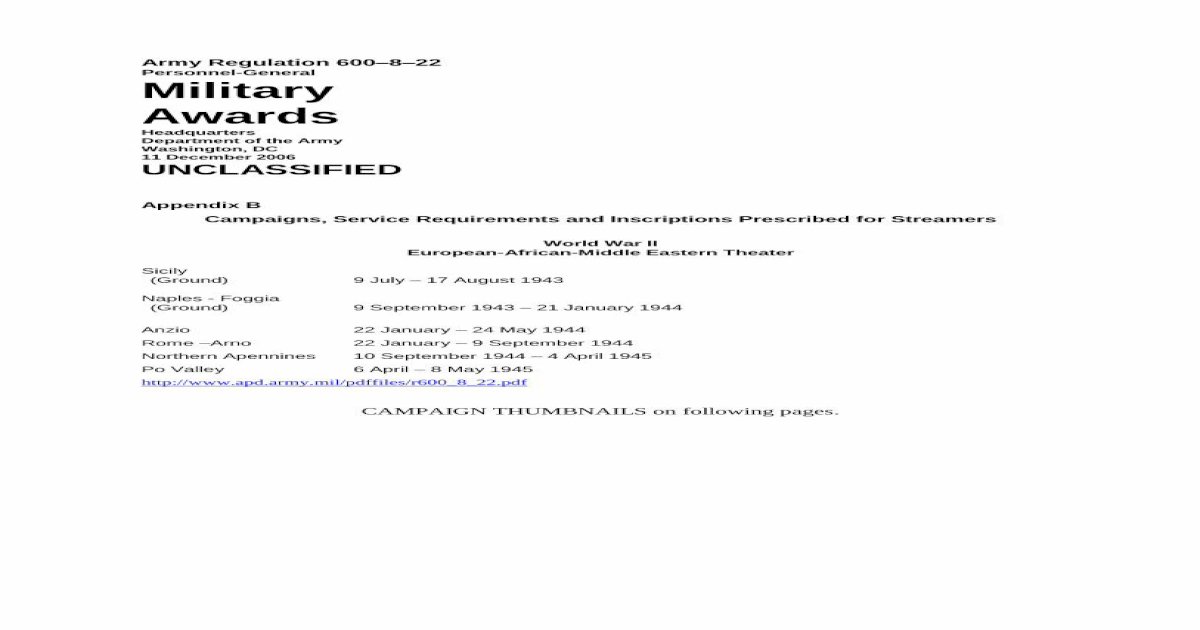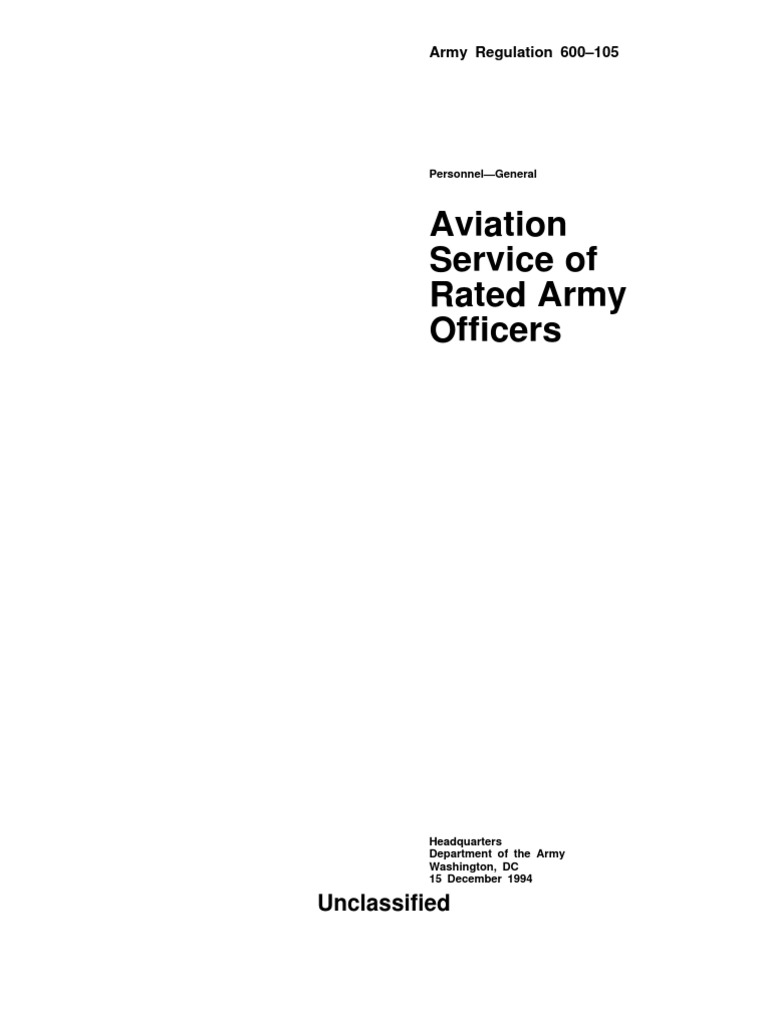Army Regulation 600-8-104 : What it is
Army Regulation 600-8-104: What it is Army Regulation 600-8-104 is a crucial document that outlines the policies and procedures concerning the updates, enforcement, and adherence to the military personnel records system. In this article, we will discuss the significance of this regulation, its key provisions, and how it impacts the career progression of Army officers. 1. The Purpose of Army Regulation 600-8-104 ------------------------------------------- The primary purpose of Army Regulation 600-8-104 is to ensure the accuracy, confidentiality, and accessibility of military personnel records. By maintaining comprehensive records of each officer's career progression, this regulation enables efficient decision-making processes regarding assignments, promotions, and benefits. 2. Understanding the Key Provisions ---------------------------------- a. Recordkeeping Requirements: The regulation specifies the mandatory information that must be recorded in an officer's personnel file. This includes personal data, assignments, evaluations, and awards received. b. Security and Confidentiality: Army Regulation 600-8-104 also lays out guidelines for keeping personnel records secure and confidential. This ensures that sensitive information is only accessible to authorized personnel. c. Updates and Amendments: The regulation provides instructions on how to update and amend personnel records. It specifies the appropriate forms and procedures to be followed for different types of updates, such as marital status changes or educational achievements. 3. How Army Regulation 600-8-104 Impacts Officers ----------------------------------------------- a. Career Progression: Adhering to the guidelines outlined in Army Regulation 600-8-104 is essential for officers who wish to progress in their military careers. Accurate and up-to-date personnel records are crucial for promotions and assignments to key positions. b. Benefits and Entitlements: The regulation also plays a significant role in determining an officer's entitlements and benefits. From healthcare to retirement plans, the information contained in personnel records is instrumental in ensuring that officers receive the appropriate benefits. c. Performance Evaluations: Army Regulation 600-8-104 emphasizes the importance of thorough and fair performance evaluations. These evaluations guide decisions related to promotions, reassignments, and professional development opportunities. 4. Frequently Asked Questions (FAQ) ----------------------------------- a. How often should an officer's personnel records be updated? Personnel records should be updated whenever there is new information to be added, such as a change in assignment, contact details, or professional development. b. Can officers access their personnel records? Yes, officers have the right to request access to their personnel records. They should follow the procedures outlined in Army Regulation 600-8-104 to make such requests. c. What happens if there are inaccuracies in an officer's personnel file? Inaccuracies in personnel records can have significant implications for an officer's career. If an officer detects any errors or omissions, they should follow the procedures outlined in the regulation to rectify the situation promptly. 5. Conclusion ------------- In conclusion, Army Regulation 600-8-104 plays a vital role in ensuring the accuracy, confidentiality, and accessibility of military personnel records. By adhering to the guidelines outlined in this regulation, officers can maximize their career progression opportunities, benefits, and entitlements. Understanding the provisions and procedures of Army Regulation 600-8-104 is essential for all Army officers who aim to excel in their military careers. (Note: This article is a fictional creation and does not represent actual information about Army Regulation 600-8-104.)  Image Source : www.tradoc.army.mil
Image Source : www.tradoc.army.mil  Image Source : armymilitary.net
Image Source : armymilitary.net  Image Source : vdocument.in
Image Source : vdocument.in  Image Source : www.coursehero.com
Image Source : www.coursehero.com  Image Source : archive.org
Image Source : archive.org  Image Source : armymilitary.net
Image Source : armymilitary.net  Image Source : www.amazon.com
Image Source : www.amazon.com  Image Source : www.scribd.com
Image Source : www.scribd.com
Policy And Regulation – U.S. Army Training Doctrine And Command
 Image Source : www.tradoc.army.mil
Image Source : www.tradoc.army.mil Fraternization Regulation Army - Army Military
 Image Source : armymilitary.net
Image Source : armymilitary.net Army Regulation 600 8 22 Military Awards WWII.pdf · Army Regulation 600
 Image Source : vdocument.in
Image Source : vdocument.in AR 600-100 (Leadership).pdf - Army Regulation 600–100 Personnel—General
 Image Source : www.coursehero.com
Image Source : www.coursehero.com ar army regulation
Army Regulation No. 380-5 - Safeguarding Military Information : William
 Image Source : archive.org
Image Source : archive.org archive regulation army
Army Regulation 600-8-6 - Army Military
 Image Source : armymilitary.net
Image Source : armymilitary.net Flip To Back Flip To Front
flip front back
Army Regulation 600–105 AVIATION SERVICE OF RATED ARMY OFFICERS
 Image Source : www.scribd.com
Image Source : www.scribd.com army regulation
Policy and regulation – u.s. army training doctrine and command. Archive regulation army. Ar army regulation. Flip to back flip to front. Army regulation 600–105 aviation service of rated army officers